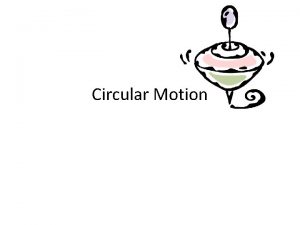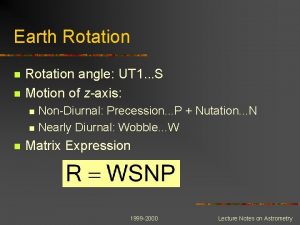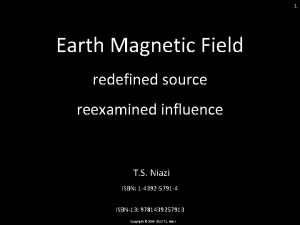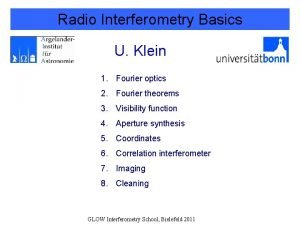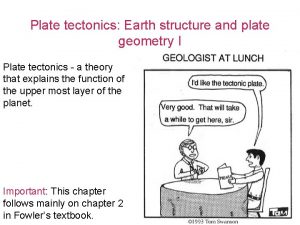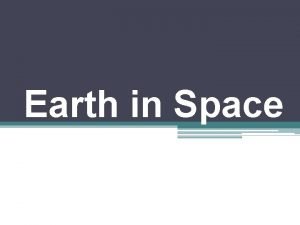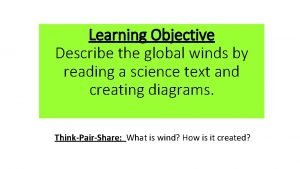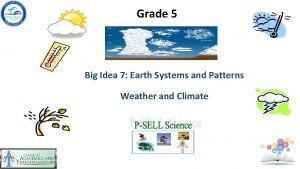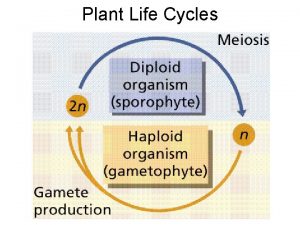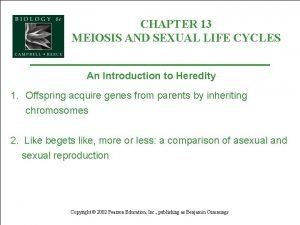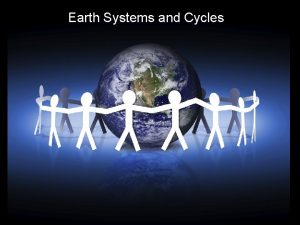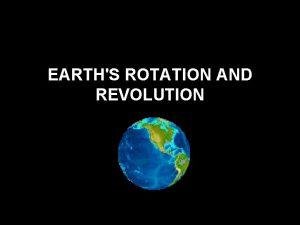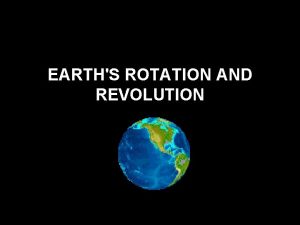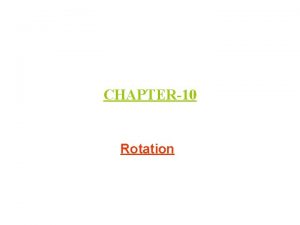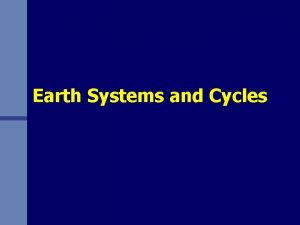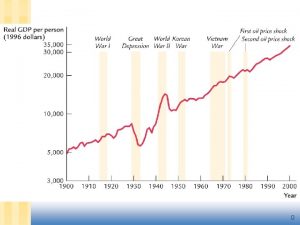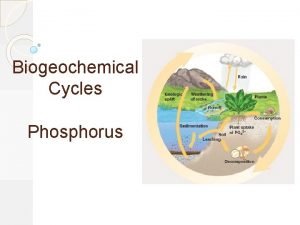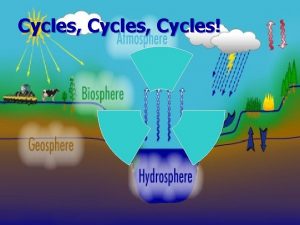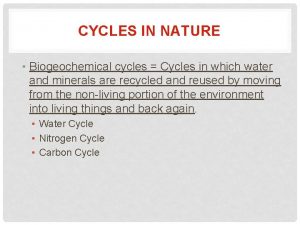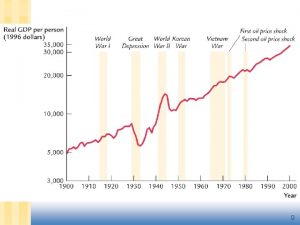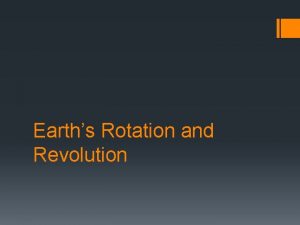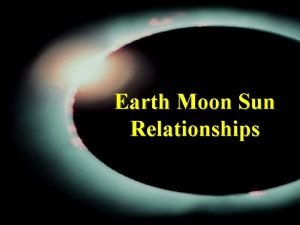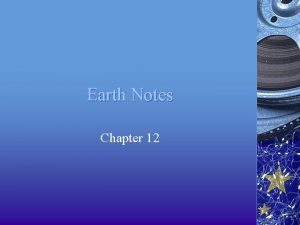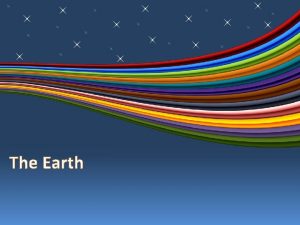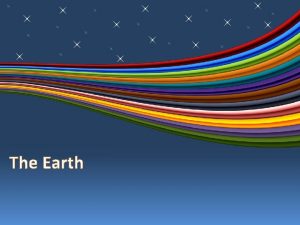Earth Patterns Cycles and Change Rotation The Earth























- Slides: 23

Earth Patterns, Cycles, and Change

Rotation • The Earth rotates on its axis every 24 hours.

Revolution • The Earth completes one revolution around the sun every 365 days. • Due to its axial tilt, the Earth experiences seasons during its revolution around the sun.

Moon and Earth Relationship • The Moon revolves around the Earth about once every month. • During its revolution, we see phases of the moon that are caused by the moon’s position relative to the Earth and sun.


Rotation of the Moon • The Moon always presents the same face towards Earth. – Another common misconception is that this means that the Moon does not rotate. – However, in order to keep the same face toward Earth, the Moon must rotate once every orbit. – The far side of the Moon is not dark, it gets just as much sunlight as the near side.


Near Side of the Moon


Far Side of the Moon

The Phases of the Moon • Waxing Crescent • First Quarter • Waxing Gibbous • Full Moon • Waning Gibbous • Last Quarter • Waning Crescent • New Moon

Waxing Crescent • The Moon is less than ½ illuminated. • It is seen after the New Moon and before the First Quarter Moon. • The crescent increases every day until the First Quarter Moon. • “Waxing” means increasing.

First Quarter Moon • The moon appears to be ½ illuminated. • The right side is light and the left side is dark. • The illuminated side grows larger every day until the Full Moon.

Waxing Gibbous • The Moon appears more than ½ but less than fully illuminated. • It is seen after the First Quarter Moon and before the Full Moon. • The Moon continues to increase until the Full Moon.

Full Moon • The Moon’s illuminated side faces the Earth. • The Earth, Sun, and Moon are in a straight line, with the Earth in the middle. • The Moon’s brightness is from sunlight reflecting off its surface.

Waning Gibbous • The Moon appears to be more than ½ but less than fully illuminated. • It appears after the Full Moon and before the Last Quarter. • The lighted side decreases each day. • “Waning” means decreasing.

Last Qaurter • • The Moon is ½ illuminated. This Moon is sometimes called the Third Quarter Moon. • The left side is lighted and the right side is dark. • The lighted portion of the Moon decreases each day until the New moon.

Waning Crescent • It appears less than ½ illuminated. • It appears after the Last Quarter Moon and before the New Moon. • The crescent decreases each day until the New Moon.

New Moon • The Moon not illuminated side faces the Earth. • The lighted side faces away from Earth. • The Sun, Earth, and Moon are in a straight line, with the Moon in the middle. • The Moon we see is very dark.

• “Everyone is a Moon, and has a dark side which he never shows to anybody. ” –Mark Twain

Misconception: Dark Side of the Moon • The “Dark Side” of the Moon should really be called the “Far Side. ” – The far side gets just as much light as the near side. For example, during a new moon, the near side of the Moon is dark, and the far side of the Moon is fully illuminated!


 How to calculate specific rotation of a mixture
How to calculate specific rotation of a mixture Rwd tire rotation
Rwd tire rotation Rotation vs revolution
Rotation vs revolution Associations and correlations in data mining
Associations and correlations in data mining Compare and contrast carbon and nitrogen cycles
Compare and contrast carbon and nitrogen cycles Earth rotation angle
Earth rotation angle Earth rotation speed
Earth rotation speed Earth rotation
Earth rotation Plate tectonics
Plate tectonics Rotation of the earth
Rotation of the earth Global wind belts
Global wind belts Obj dating
Obj dating Big idea 7 earth systems and patterns answer key
Big idea 7 earth systems and patterns answer key Big idea 7 earth systems and patterns
Big idea 7 earth systems and patterns Stockspotter
Stockspotter Fadlife
Fadlife Plant life cycles and alternation of generations
Plant life cycles and alternation of generations Chapter 13: meiosis and sexual life cycles
Chapter 13: meiosis and sexual life cycles Chapter 13 meiosis and sexual life cycles
Chapter 13 meiosis and sexual life cycles Physical and chemical change
Physical and chemical change Absolute change and relative change formula
Absolute change and relative change formula Difference between physical change and chemical change
Difference between physical change and chemical change Change in supply and change in quantity supplied
Change in supply and change in quantity supplied Examples of physical vs chemical changes
Examples of physical vs chemical changes


